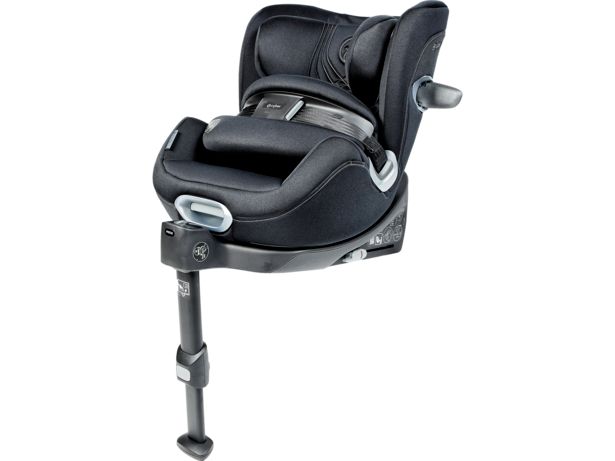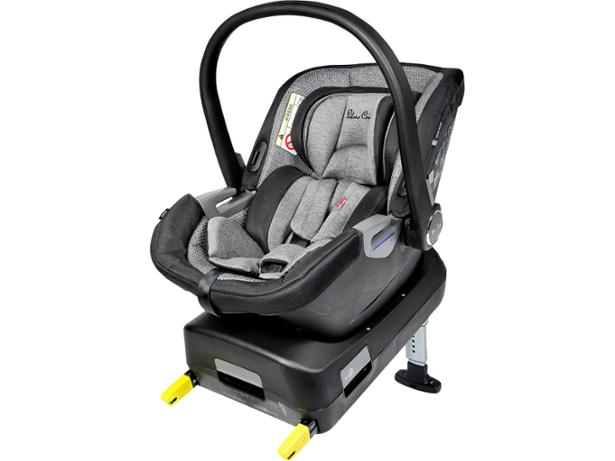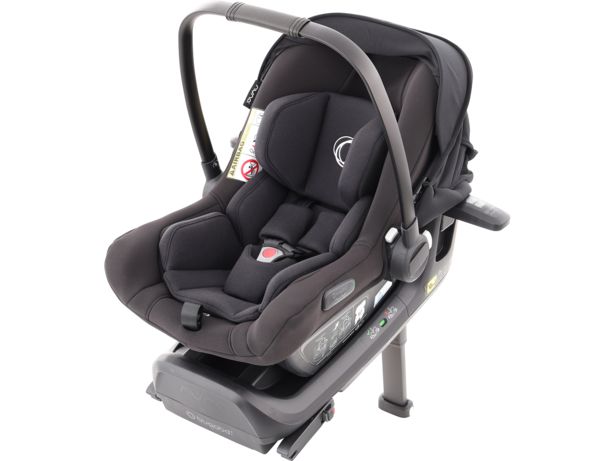By clicking a retailer link you consent to third-party cookies that track your onward journey. If you make a purchase, Which? will receive an affiliate commission, which supports our mission to be the UK's consumer champion.
Which? Don't Buy child car seats

Buying a poor child car seat could expose your child to a higher risk of serious injury if you're ever involved in a car accident, especially at high speed.
We crash-test each car seat we review to help you avoid those that may not be as safe as the manufacturer claims.
Join Which? to find out which child car seats we've named as Don't Buys.
What makes a Don't Buy child car seat?
We've tested car seats where the forces of the crash have ripped out the harness, sending our child dummies flying. We've also seen Isofix bases break, slamming our child dummies straight into the passenger seat in front.
All these seats have passed the minimum safety standards to be sold on the market, but aren’t good enough to survive our tougher tests.
We've got more than 50 years' experience of testing child car seats, so we can inform parents about the seats that pass our crash tests, are simple to fit (so you don't risk fitting errors that could reduce safety), and comfortable for your little one.
Why are Which? car seat reviews different?
Which? has reviewed the latest child car seats from the biggest brands including Britax, Cybex, Graco, Joie and Maxi-Cosi.
Our specially designed crash tests go further than the legal minimum standards that manufacturers must meet.
We crash-test each car seat we review using state-of-the-art dummies, in two crash situations that represent what could happen in a front and side-impact crash - two of the most common types of accident you could be involved in.
Real children sit in each child car seat to assess the support for your child's head and legs, how roomy the seat is for your child, and how much space there is for growth. For infant carriers we assess whether your baby will be held in the best position when travelling.
Our experts, along with parents and children, get hands-on with each seat to see how easy it is to install in a car. If it's not installed correctly, it won't work properly in a crash.
We fit each car seat into a test car (using both Isofix and seatbelt modes) to find out how much space each child car seat takes up. Our tests will tell you if you'll have space to transport your other children safely while the car seat is in, or if you won't be able to use the front passenger seat.
See how we test car seats for more information about our rigorous baby and child car seat tests.
Car seats on eBay, Freecycle, Shpock and Gumtree: the safety risks of buying second-hand
A second-hand child car seat could put your child's life at risk for several reasons.
Second-hand car seats can have hidden damage
That cheap car seat you're bidding on might have been involved in an accident but with no visible damage. The safety features that give your baby protection may well have been compromised by a hairline crack and you wouldn't know to look at it. Is it worth the risk?
You might not get the instructions
The instructions are often missing from second-hand car seats, which means you may end up fitting and using the car seat incorrectly, putting your child in harm's way.
They'll be older models
Second-hand car seats are more than likely to be older models and might not be designed to meet current safety standards. In the US, car seats have an expiry date printed onto their plastic shell and the manufacturer accepts no liability for product malfunction after this date. In the UK it's not common practice to date-stamp seats, but as technology evolves, we'd always advise that you choose a model with the latest safety features and that's approved to the latest rules.
You might end up with a Don't Buy...
A car seat can become a Don't Buy car seat for several reasons:
- It performs poorly in one or more of our crash tests.
- Our testing uncovers a serious safety issue - for example, not being able to get the harness tight enough to secure a baby properly.
- It's so difficult to install that there's too high a risk of getting it wrong, which would reduce the crash protection it's designed to provide.
If you must use a second-hand seat, only accept one from a family member or friend. And only if you're certain that you know its history, it comes with the original instructions, it's not too old and the approval label in the seat is still current.
Check it's in good condition and make sure it correctly fits both your car and your baby or child.
Second-hand car seat safety checklist
- Examine it carefully for damage (but remember, not all damage to child seats is visible to the naked eye).
- Make sure the manufacturer's instructions are available (often a PDF can be found online).
- Check the manufacturer's advice about how old the seat should be before it needs to be replaced.
- Make sure the car seat is suitable for your child's weight and height.
- Try the seat in your car - if you can't get it to fit securely, don't buy it.
- Check that the seat meets the United Nations standard Regulation 44.04 or R129 - look for the label.
For more information on using second-hand car seats, including how to dispose of or recycle your old car seat, check out our guide on what to do with your old car seat.
Which? is independent - we work for you, the consumer, so you can be sure that our product recommendations are influenced only by our test results. We're not influenced by third parties and we don't accept freebies from product manufacturers or retailers. We buy all the products that we test ourselves, so our advice helps you to make the right choice first time and avoid costly mistakes. Read our statement of editorial independence.
Not yet a Which? member? Join Which? and you'll receive access to all of our exclusive online content - including all our reviews.



